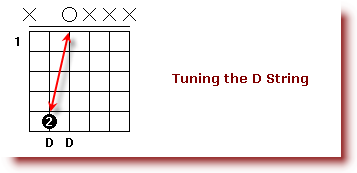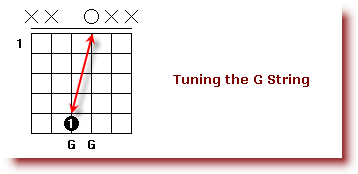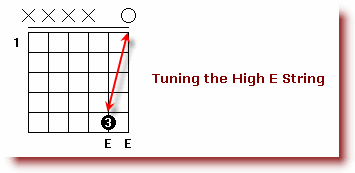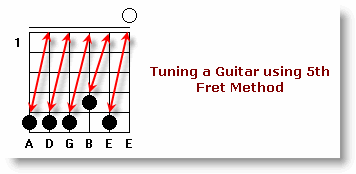|
How to Tune a Guitar Using Relative Tuning
You now know that learning how to tune a guitar is essential. Tuning a guitar using a tuning fork is simple and effective. It's a device that emits a tone when you whack it against something. Simple to use and inexpensive the tuning fork is older than Methuselah but still very common today. They come in various pitches (the note that it emits) but for the meantime you should only be concerned with one that provides the same pitch as one of the open strings on the guitar in standard tuning, that is EADG or B. My personal preference would be for an E or A. In this example I am going to describe how to tune a guitar using a tuning fork with a pitch of E. Hold the tuning fork lightly by the handle and hit the forks on something (the bony part of the palm of my hand or my knee works for me, but don't injure yourself). This sets the forks ringing so before that ringing dies hold the butt of the handle against a hard surface, your guitar might be a good idea, and you'll hear the surface amplifying the ringing forks. 'Hear' the sound, and hum to yourself the same pitch. Now tune the E string by turning it's tuning peg (also called a machine head) either clockwise or anti-clockwise until it reaches the same pitch as you are humming. When you think you have the string tuned to the correct pitch, repeat the process of using the tuning fork, hum again, and adjust the string if necessary. When the string is at the same pitch as the tuning fork you are good to go... ...to the next step that is. Now you need to tune the remaining strings to a pitch relative to the E string. The remaining strings will be tuned ADGB and high E. And this is where we move onto relative tuning by ear.
How to tune a Guitar - Tuning the Remaining Strings Using a finger of your choice, on the hand that is holding the neck of the guitar, press the 6th string down just behind the 5th fret (this is called 'fretting').
While holding the string down pluck it with a finger (or plectrum) using your other hand. Make sure the note rings out clearly, and keep holding that note down. You are now playing an A note on the 6th string. Now pluck the open 5th string, which is also an A and tune the A string to the same pitch as that of the fretted noted you are playing on the 6th string. When you are happy that both notes are the same, tune the 4th string, D, by fretting the A string on the 5th fret and tune the open D string to the same pitch as that of the fretted noted you are playing on the 5th string.
Now do the same for the the 3rd string, G, by fretting the D string on the 5th fret and tune the open G string to the same pitch.
Next, repeat the same process, only this time fret the 3rd string, G on the 4th fret, NOT the 5th. This note is the B that we require to tune the 2nd string, which is of course, B.
One more to do! And we just repeat the process, this time reverting back to fretting the 5th fret rather than the 4th on the 2nd string, B. This gives us an E.
And you're done! TIP: Use a chord of all E's and B's to check your tuning
The following diagram represents how all the strings are tuned using the 5th fret method.
I will show you some other methods of how to tune a guitar, like using harmonics, using different frets, or using an electronic guitar tuner and I would use them all at different times and you'll probably find you do the same when you get the hang of it. |






